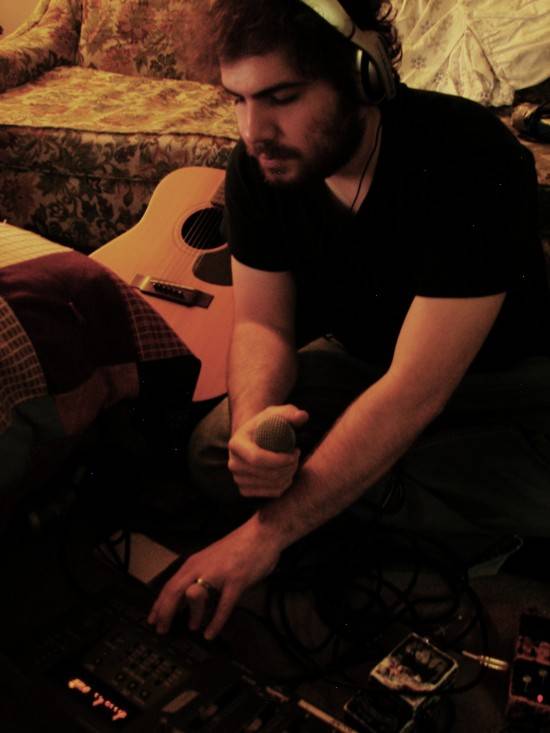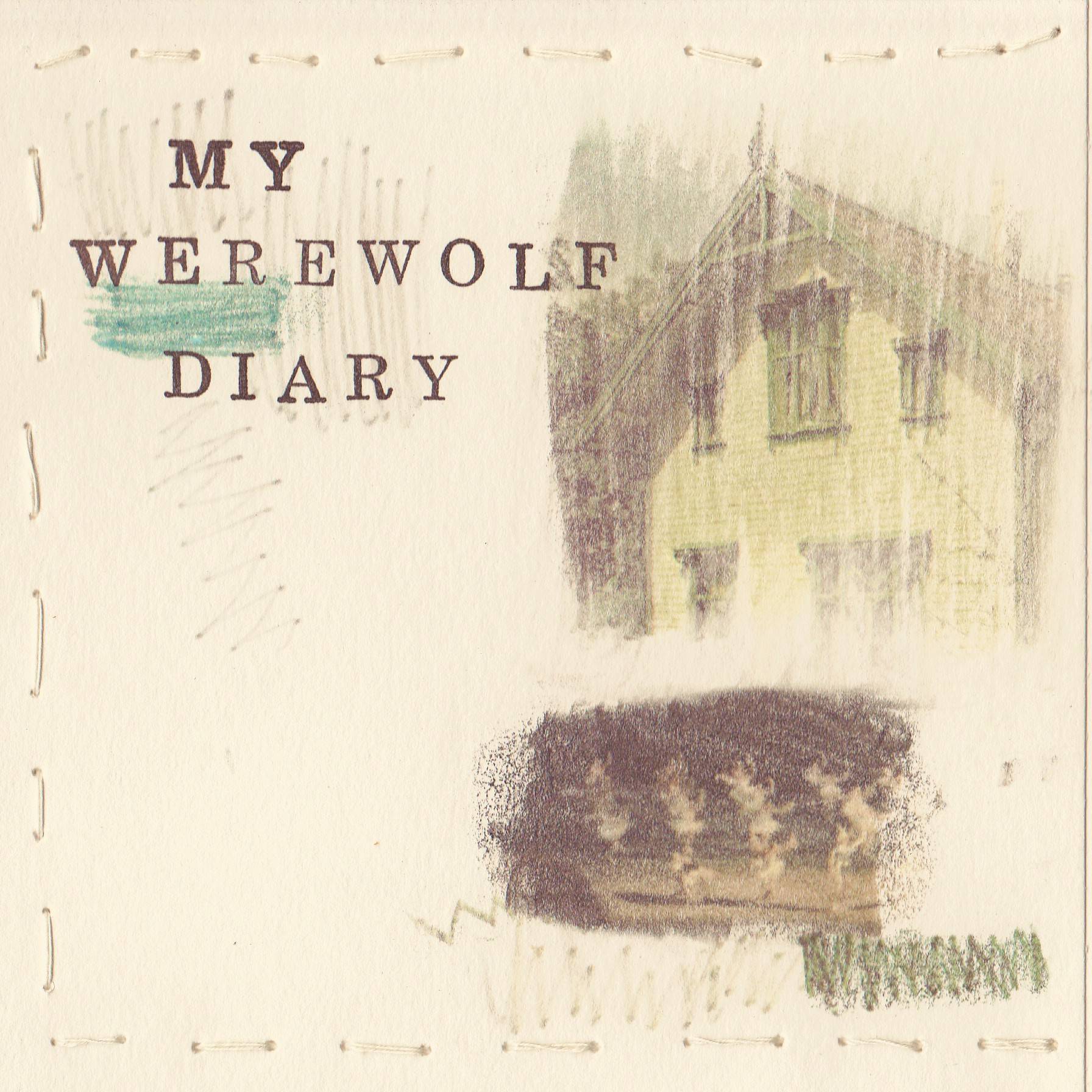
“Any person that’s a good storyteller is also a really good bullshitter, you know?”
Elzie Sexton is unhurried, a man at peace with himself and his art, as we — accompanied by his wife, Nichole — sip our drinks one night in May at Esquire. He’s been forced to learn to be patient, and now that several projects that he’s labored on for years are coming together, the satisfaction is evident on his face and in his mannerisms.
First off (and the subject of most of our conversation), he’s releasing his first album as My Werewolf Diary (Sexton’s solo project), entitled The Barrens, on his own label, The Perry Tapes, in July. That will be followed by a mixtape in August (Best Ghost Mayne) and a split 7″ with Peninsula is being pressed now and will be out in late summer.
As if that weren’t enough, New Ruins is releasing their third full-length, the Brian Deck-produced This Life is Not Ours to Keep, on Matt Talbott’s Earth Analog in September. The band, which Sexton co-fronts with Caleb Means, will be playing release shows in Champaign, Chicago, and Olney, dates TBD, and they also have a split 7″ with Tractor Kings coming out, as well.
Finally, one last bit of news: after more than a year of waiting to say something publicly, Sexton stated, “I hope to get to work with Isaac Brock and his label, Glacial Pace, in the near future. Isaac is a very smart dude, he does not bullshit and has been really encouraging and given some good advice. It’s crazy, how shit just takes so long to happen, especially when you have to plan everything around constantly shifting schedules, opportunities, and all that shit. I am just excited that he is interested in doing something when he has the time.”
IT’S NOT EASY BEING GREEN
The MWD album has been the product of several improvisational sessions spread over the last couple of years. “How I started doing this project was, I wanted to do an experiment where I improvised everything all at once; trying to get an entire song that had multiple parts done in a short amount of time,” Sexton explained. “I did this one night — I can’t remember how many songs I had the first night I did it, it was like, five or six or seven.
“I just wanted it to be really spontaneous, but trying to get something out of it, not just something to work with later. More or less, just trying to immediately write something that I like, and anyone who writes music knows that that’s something that’s hard to do.”
Sexton had a role model for his experimentations in spontaneity. “I should mention that a lot of this was inspired by Guided by Voices and Robert Pollard’s stuff,” he noted. “During the time I was doing this, we were doing the Cover-Up as Guided by Voices [in 2009] and that was really fun, because it was how I imagined an actor doing research for a role for a movie.”
He recorded the songs on a four-track recorder both at home and at Boombox, a studio located in Means’ basement in Urbana. One of the instrumental constants in the MWD songs is “Kermit,” a toy keyboard that Sexton acquired for 25 cents at a now-defunct junk shop in Macanda, outside of Carbondale. “[Kermit is] fun, but he’s not the easiest guy to work with,” Sexton deadpanned. “He’s kind of a prick sometimes. He’s not consistent in his performance. You can’t rely on him all the time.” Sexton is threatening to replace Kermit with an iPod for future live shows. “I’m pretty much too stupid to do things with a MIDI,” he claimed. His investment may pay off if Kermit becomes obsolete, though, as Sexton recently found an identical keyboard selling on eBay for $140.
TRUE TO HIS ROOTS?
A native of Olney, Illinois (pop. 8,631), Sexton laces his lyrics with oblique references to working-class life in a rural small town (“dodging anhydrous clouds,” “I just need another something to do,” “alone in a place full of lies, hell they lied to everyone”); he claims to not necessarily be writing from experience. “I think a lot of people that I like write about their experiences,” he said, “but at the same time, I like people who are completely the opposite, like John Fogerty. He wasn’t from a fucking bayou. He was from California. But still, he wrote really awesome songs. For me, it’s a lot of stuff based on experiences, but any person that’s a good storyteller is also a really good bullshitter, you know? They know how to keep you interested in something, and regular life isn’t always exciting, or it isn’t always worth talking about.”
Sexton cites Stephen King as a particular influence. “His writing is really profound on me because he’s someone who grew up in a small-town area and had to work really shitty jobs for a long time, and he ended up being really successful,” he said. “That’s cool to anybody who’s actually had to do that. I think everybody wants to be successful with what they love to do.”
CREATING A BUFFER
Another constant of My Werewolf Diary is Sexton’s processed, distorted vocals, which are painstakingly produced through a multi-step process involving a distortion pedal, a delay pedal, and multiple layers. “Somehow, that combination makes it sound like you’re singing in a room, it gives it that room effect,” he noted. “That’s something I’d like to be able to reproduce live, because that’s a really aesthetically important part of it, and when you’re playing a 30-minute show, it’s kind of hard to have time to set up vocals properly to do that.
“I really like Robert Johnson’s recordings,” he continued. “A lot of those I’ve heard were recorded in a hotel room or something. A lot of those songs have that really … where everything is pushing the sound, where it’s almost distorting and breaking up. I really like that when you push any kind of medium, whether it’s tape or digital; Neutral Milk Hotel’s In the Aeroplane Over the Sea is a really good example of someone on the recording really pushing the tape to where everything is really distorted. To me, it gives that a much more interesting texture than just having a really clean, pristine vocal sound. It’s kind of like wearing sunglasses and talking to people, it gives you a nice buffer that you can work with.”

A SPECIFIC VINTAGE
Using a technique that Nichole learned in art school, each copy of The Barrens will have a cover that’s handmade, numbered, and decorated with printed images leached with a solvent from old copies of National Geographic.
Sexton explains, “I got lucky; I had to venture to Tuscola to find the goods — there’s only certain years [of National Geographic magazines] you can use. Sometime in the ’50s through the early ’80s, the ink they would use was a clay-based ink, and then they switched over to something that will kind of transfer, but it doesn’t do this where you can get all the pigments out.”
——-
In closing: “Copies of the mixtapes will be available at local record stores, at New Ruins’ shows, or email me, mywerewolfdiary@hotmail.com. I am open to playing some shows around here when I have time, so contact me, dudes! I want to play in houses!”








